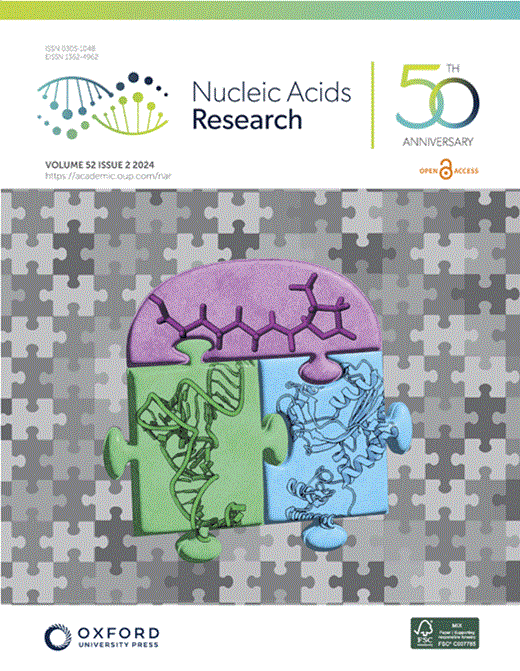DNA/RNA hybrids avoid channel gating that leads to the continued packaging of numerous hybrids into the phi29 protein shell
IF 16.6
2区 生物学
Q1 BIOCHEMISTRY & MOLECULAR BIOLOGY
引用次数: 0
Abstract
Packaging of double-stranded DNA (dsDNA) into viral capsids is crucial in dsDNA viruses, including herpesviruses, adenoviruses, poxviruses, and bacteriophages. An ATPase motor compacts genomes. The phi29 DNA packaging motor, a model system, employs a hexameric pRNA (packaging RNA) ring and ATPase, sharing a revolving mechanism observed in herpesvirus genome packaging, bacterial DNA transport, Holliday junction resolution, and plasmid conjugation. Channel gating terminates translocation and readies a reversed pore for dsDNA exit; its mechanism is unclear. We report a packaging efficiency difference between dsDNA and RNA/DNA hybrids. Single-channel electrophysiology and sucrose gradient ultracentrifugation reveal that packaging fails if both ends are dsRNA, but succeeds if either 5′ or 3′ end is DNA. As long as one strand is DNA, RNA/DNA hybrids are packaged, with a higher copy number than dsDNA. Single-pore conductance assays show that this efficiency results from the absence of channel gating. The channel remains open during RNA/DNA translocation and does not close after hybrid packaging, implying dsDNA’s role in gating and conformational changes. This gating arises from dsDNA’s interaction with three flexible loops of the motor channel. These findings offer a structural and chemical foundation for designing containers to package RNA/DNA hybrids for gene/RNAi delivery, therapy, synthetic biology, nanotechnology, and single-particle sensing.求助全文
约1分钟内获得全文
求助全文
来源期刊

Nucleic Acids Research
生物-生化与分子生物学
CiteScore
27.10
自引率
4.70%
发文量
1057
审稿时长
2 months
期刊介绍:
Nucleic Acids Research (NAR) is a scientific journal that publishes research on various aspects of nucleic acids and proteins involved in nucleic acid metabolism and interactions. It covers areas such as chemistry and synthetic biology, computational biology, gene regulation, chromatin and epigenetics, genome integrity, repair and replication, genomics, molecular biology, nucleic acid enzymes, RNA, and structural biology. The journal also includes a Survey and Summary section for brief reviews. Additionally, each year, the first issue is dedicated to biological databases, and an issue in July focuses on web-based software resources for the biological community. Nucleic Acids Research is indexed by several services including Abstracts on Hygiene and Communicable Diseases, Animal Breeding Abstracts, Agricultural Engineering Abstracts, Agbiotech News and Information, BIOSIS Previews, CAB Abstracts, and EMBASE.
 求助内容:
求助内容: 应助结果提醒方式:
应助结果提醒方式:


